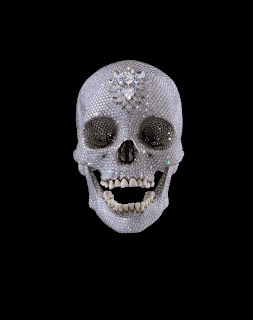"Misrach lives such moments to their sensory brim without standing on any ceremony. He gives us the feeling that what happens out there in the nominal wild happens for him and to him quite in advance of being filtered through any memory of art." (Max Kozloff, American Art, National Museum of Art, Smithsonian Institution)
 |
| 'Battleground Point #1' (1999) Richard Misrach |
I. Define the Enlightenment, including its context (time and place).
The Enlightenment was likely to have been centred around France during the 18th century but when the Enlightenment truly started is not known nor when it ended. More or less in present day we are still in an Enlightenment world. According to Hamilton, (1992, p. 23) "the Enlightenment was the creation of a new framework of ideas about man, society and nature, which challenged existing conceptions rooted in a traditional world-view, dominated by Christianity". Because of theses new ideas Enlightenment 'intellectuals' raises concerns of the Church's authority, its control of the information media and their traditional views of the world.
II.Define the concept of the Sublime.
The Sublime was the ultimate experience of divinity and greatness that is unmeasurable or imitated. The concept is about how "the life of feeling and spirit is in harmony with the larger order of the universe." (AUT University, 2012, p.110) A good example of the Sublime is 'Wanderer in the Mists' by David Friedrich. Instead of a serene and admiration to beauty of the misty mountains treatment; the landscape is full of energy. Landscape is used here to show the Sublime, the feeling of overwhelming greatness yet a mixture of awe as the artist stands on the rocky mountain top.
III. Explain how the concept of the Sublime came out of Enlightenment thought?
The idea of the Enlightment was to look and have a new view of the world without the influence of the Church. This led people to focus more on humanity and the study of the natural world. As a result Sublime emerged possibly because of the idea how people are compared and incomparable to the enormous universe.
IV. Discuss the subject matter, and aesthetic (look) of Misrach's work to identify the Sublime in his work. Include some quotes from art critics and other writers who have written about his work.
The Enlightenment was likely to have been centred around France during the 18th century but when the Enlightenment truly started is not known nor when it ended. More or less in present day we are still in an Enlightenment world. According to Hamilton, (1992, p. 23) "the Enlightenment was the creation of a new framework of ideas about man, society and nature, which challenged existing conceptions rooted in a traditional world-view, dominated by Christianity". Because of theses new ideas Enlightenment 'intellectuals' raises concerns of the Church's authority, its control of the information media and their traditional views of the world.
II.Define the concept of the Sublime.
 |
| 'Wanderer in the Mists' (1818) David Friedrich |
III. Explain how the concept of the Sublime came out of Enlightenment thought?
The idea of the Enlightment was to look and have a new view of the world without the influence of the Church. This led people to focus more on humanity and the study of the natural world. As a result Sublime emerged possibly because of the idea how people are compared and incomparable to the enormous universe.
IV. Discuss the subject matter, and aesthetic (look) of Misrach's work to identify the Sublime in his work. Include some quotes from art critics and other writers who have written about his work.
 |
| 'Swimmers, Pyramid Lake Indiana Reservation, Nevada' (1987-93) Richard Misrach |
"But he almost always includes a sense, visible or implicit, of human interaction and presence, and a magisterial manipulation of light and composition." (David Littlejohn)
Misrach captures very captivating, calm and simplistic images yet very complex and mysterious in their ideas. Misrach's main subject matter is the open landscape. He focuses only what is natural and draws people in by the beauty and colour of nature. Taken in the 20th and 21st century he includes no towns, shops, cars or anything that is noisy to disturb his scene.
Like the concept of Sublime, nature is the central focus in Misrach's works. In works like 'Swimmers, Pyramid Lake Indiana Reservation, Nevada', landscape overpowers the figures to give a sense of admirable greatness yet fear of the overwhelming environment that seems to go one forever.
V. Describe how does Misrach's photography makes you feel. How does it appeal to your imagination?
 |
| 'On the Beach' (2002-05) Richard Misrach |
 |
| 'On the Beach' (2002-05) Richard Misrach |
His works also gave me as a viewer a world where I can escape to from the wild and busy reality. His works makes me feel as if I'm longing something. The colours and calmness that he managed to capture hypnotically draws me in and drowns me into his world.
VI. Identify some other artists or designers that work with ideas around the Sublime, from the Enlightenment era as well as contemporary artists.
 |
| 'The Widow of an Indian Chief Watching the Arms' (1785) Joseph Wright of Derby |
 |
| 'Hidden Lake of Memories Blue' (2010) John L. Mendoza |
Like Derby's painting, the dramatic use of colour and brushstrokes shows the idea of the Sublime.
VII. Add a Sublime image of your choice to your blog, which can be Art or just a Sublime photograph.
 |
| 'The Colours of Winter' (2011) Leonid Afremov |
Reference:
http://www.bu.edu/wcp/Papers/Aest/AestGilm.htm
http://seesawmagazine.com/misrachpages/misrach_interview.html
http://www.pdnphotooftheday.com/2010/01/3367
http://www.edelmangallery.com/misrach-bio.htm
http://online.wsj.com/article/SB10001424052970203914304576631420492598888.html
Clewis, R. R. The Kantian sublime and the revelation of freedom. Retrieved from
http://www.cambridge.org/servlet/file/store6/item2495325/version1
/item_9780521516686_excerpt.pdf
Hamilton, P. (1992). The Enlightenment and the birth of social science, in Hall, S. & Gieben
B. (eds), Formations of Modernity. Cambridge: Open University Press.
AUT University. (2012). Landscape and the sublime. Academic Literacies in Visual
Communication 1. Auckland, New Zealand: Lyceum Press.






